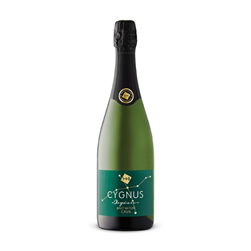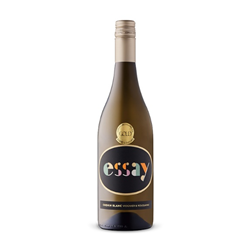In the world of sparkling wine, the categories range from Sweet – Doux in France, Dulce in Spain, Dolce in Italy – through categories like Sec or Demi Sec –which means “Dry” but isn’t – to Brut and ultimately “Brut Nature”. This last category is about as dry as a wine can get.
Doux champagnes could have 50 grams or more sugar per litre –the LCBO has two in this category, including the Veuve Clicquot Rich Champagne, $89.50, with 53 grams of sugar per litre.
At the other end of the scale, Brut Nature examples have three grams of sugar, or less. Currently there are just two of these wines listed at the LCBO with a number of other Spanish examples in the queue.
Wine trends and tastes change and evolve. While the bulk of sparkling wines are in the Brut category, with many Proseccos actually being slightly sweeter in the Extra-Dry” range, back at the time of the Napoleonic Wars, it was the sweet wines that dominated.
The quarrel Napoleon had with the Russians put a huge cramp on Champagne sales, as the aristocracy were great consumers of Champagne. It is reported that in 1814, a shipload of Madame Clicquot 1811 Champagne evaded French blockades to carry her wine to the Russian court. As the war ended, the wine arrived and was welcomed enthusiastically. Tsar Alexander is reported to have said that thereafter he would drink nothing else.
If you are looking for really sweet sparkling wines – and don’t want to spend $90 on the Veuve Clicquot mentioned above, you generally have to look at a sparkling Moscato or something like Asti Spumante. Jacob’s Creek Sparkling Moscato Rosé from Australia carries 60 grams of sugar per litre, and sells for $14.
Today, with Champagne and other sparkling wines made in the “Traditional Method” which involves a secondary fermentation in the bottle to create the bubbles, it is the Brut category which holds prominence. These are wines with up to 12 grams of sugar per litre.
Included in this category are Cava wines from Spain and Crémant wines from other areas of France, including Bordeaux and Burgundy. Every wine producing area in the world seems to have its share of wines of this type.
Ontario is particularly well-suited for growing grapes suitable for sparkling wines, both in terms of climate and geology.
Jackson-Triggs Entourage Grande Reserve Brut 2015, $29.95, was on the March 30 Vintages release, and is also available at Wine Rack stores. Sara d’Amato of winealign.com wrote that it offers “an abundance of citrus and stone fruit, sprightly acidity and the calming presence of a toasty, lees-derived flavours palate. A nicely balanced dosage keeps the palate dry and crisp adding only mid-weight roundness that contributes to a widely appealing style.”
The reference to “dosage” is significant, as it is in this stage of the sparkling wine-making process that the ultimate style is achieved.
After the initial fermentation creates a still wine, a liqueur de tirage containing sugar and yeast is created, then added to the still wine which is bottled as quickly as possible and capped. This results in the second fermentation that creates the bubbles right in the bottle. Over time, the bottles are gently shaken (“riddled”) and tipped so that the sediment produced by the yeast ends up in the neck.
After flash-freezing, the wine is uncapped skilfully and the pressure shoots out the frozen sediment, leaving some space.
Here is where the dosage –“doh–sahj” is used to not only fill up the empty space, but also to help create the style intended. It can be made up of the unfermented grape must of the original wine, but, as Gabriel Demarco, Assistant Winemaker at Cave Spring Cellars explains, it could be any wine that the winemaker believes will provide the character they are aiming to achieve. The exact make-up is commonly a proprietary secret. Except for Brut Nature, it will also contain some sugar for balance. One Ontario winery is said to use icewine in the dosage.
 Cave Spring Cellars Blanc de Blanc Brut, $29.95
Cave Spring Cellars Blanc de Blanc Brut, $29.95Tom Pennachetti of Cave Springs explained “the tools in the kit to achieve texture start with yield. Obviously the lower the better to gain extract and richness, but the base wine can’t be made from ripe grapes, and you have to keep a sizeable enough crop on the vine to avoid having to pick too early, especially in these times of ever-warming summers in nearly all climates. The other tools include Malolactic Fermentation, which also must be used carefully since the base wine needs enough acidity to keep buoyant on the palate. Then there is barrel aging, which can overwhelm the fruit of a wine quite easily. Finally, there is lees contact, which we prefer. So we aim to have weight, and in particular a stony richness, which comes from site and restrained yield, in most cases. We do not do MLF and rarely use barrel aging, though we have on occasion used the latter via very neutral, old oak, and it can deliver some smoothing out of the palate. Our primary tool is lees contact in bottle, which we extend to three years in our Blanc de Blancs, and 5 to 7 for the CSV range. We have been able to creep our Residual Sugar count down from the 10-12 range to the 4-6 range over the past few years, mainly through lees contact and yields that are low enough to deliver texture but not so low that they bring about pre-mature ripening and loss of fruit and acidity. Maybe some day we’ll try Brut Nature, but the wines can be a tad too austere and 4 or 5 g/L of RS is still very, very dry for a bottle fermented wine.”
The Cave Spring Banc de Blanc has eight grams of sugar per litre, while the Jackson-Triggs is slightly higher.
Appearing on some Vintages shelves May 11 is the Angels Gate Archangel Brut Chardonnay 2013, $29.95. It is the wine’s first official appearance there, and in some communities you will have to order in. Vintages explains that “It's lively and complex, with apple, lemon, biscuit, toast, baked apple, custard and vanilla notes and a lovely minerality on the long finish.” It, too, has 8 grams of sugar per litre.
This brings us, finally, to “Brut Nature”. Many sources, in discussing Brut Nature Sparkling wines, caution that the style is “not for everyone.” With Brut Nature, in the dosage, instead of adding back grape must with any sugar in it, only the same still wine that was used originally is re-added to fill the bottle and balance things off.
 Cygnus Organic Brut Nature Cava, $17.95
Cygnus Organic Brut Nature Cava, $17.95Brut Nature’s popularity in Spain may be in part a reflection on the warm climate of that country. The suggestion that it be served with spicy dishes also makes sense. The Wine Folly website suggests that it may be a substitute for cocktails or beer. I am not sure.
The carbonation itself exaggerates the dry impact, so that it has more "tang" than a dry white or even red would have, even with the same amount of residual sugar. In a Brut Nature, the fruit really seems to be under the gun.
The only other LCBO Brut Nature wine is the Drappier Brut Nature Pinot Noir Champagne, $57.95. With 3 grams of sugar per litre, it really has the same amount of residual sugar that you would find in a good French Burgundy – which is also Pinot-Noir. I have not tried it, but I would bet that with the carbonation, it will have a much drier impact than a regular still Burgundy. In the Wine Spectator, it is said that “this well-balanced, mouth-watering champagne offers a lively bead and flavors of ripe cherry, toast, candied kumquat and smoke, with a clean-cut, lightly spiced finish.” – 91.
Niagara’s Kew Vineyards is the first winery in Ontario to produce a wine of this kind. Their Pinot Meunier Brut Nature, $29.95, is available at the winery (kewvineyards.com). Pinot Meunier, is a black grape that, along with Chardonnay and Pinot Noir, is customarily used in the production of Champagne.
The winery suggests that with this wine, “ripe lychee and citrus on the nose are complimented by a sweet floral undertone. Crisp lemon, white grapefruit and pear dominate on the palate. Notes of grapefruit and green apple remain on the long, acidic finish.”
Winemaker Philip Dowell explained how the adding of sugar and yeast is used in tirage, the second fermentation process, while the dosage is where the final balance and stylistic qualities are crafted with the topping up at the end.
What is evident is that the creation of a good sparkling wine in the traditional method involves both craft and art…and a whole lot of care.
What place Brut Nature examples will ultimately have in the array remains to be seen. You will have to experience itself to form your own opinion.
May 11 Vintages Release
Sparkling
Kim Crawford Signature Reserve Fizz 2013, $29.95 – Made from equal parts Pinot Noir and Chardonnay, this comes across as drier than the 9 grams of sugar per liter might lead you to expect, but it admirably aligns with the winery’s assertion that it is “taut, crisp and minerally on the palate.” A touch of apple, a wisp of toast, and a good dollop of citrus characterize the flavour. Be prepared to order it in in you are a fan, as it is not slated for all our stores.
White Wine
 Essay Chenin Blanc/Viognier/Roussanne 2018, $14.95
Essay Chenin Blanc/Viognier/Roussanne 2018, $14.95Feudo Maccari Olli Grillo 2017, $15.95, brings us a Sicilian white that James Suckling describes as being mid-weight with “plenty of lemon-zest character and a touch of salty minerality.” – 90.
Momo Organic Sauvignon Blanc 2016, $19.95, should be interesting. We are accustomed to New Zealand Sauvignon Blancs as being “pedal to the metal” on citrus and gooseberry intensity. This, however, is described as being a ”ripe, mellow sauvignon blanc with treefruit, peach, melon and red capsicum flavours. A subtly succulent wine in charming easy-drinking style - Bob Campbell MW- 91. Is he right? Try it and see.
Pomar Junction Sidetrack White 2017, $19.95 comes from Paso Robles in California, an area that produces some very flavourful wines. This blend also features Rhone varietals –Roussanne and Grenache Blanc. Vintages says that it demonstrates rich tropical fruit, peach and sweet spices along with a “weighty mouthfeel.” Tempting.
Rosé
Cabriz Rosé 2018, $13.95, is a Portuguese bargain from the Dao. Dry, but with ample red berry flavours and good acidity, it should be a go-to companion for grilled chicken or pork loin - or it could stand alone as a perfect summer sipper.
Flat Rock Pink Twisted Rosé 2018, $17.95, from Niagara, is a fruit-forward blend of Pinot Noir, Riesling, and Gewurztraminer. Crafted for enjoyment on its own or with something like grilled salmon, it is just slightly off-dry and heavy on berry flavours.
Red
Chateau de Ribebon 2015, $15.95, is from Bordeaux. “With ripe tannins and blackberry generosity over the wood aging, this is still structured yet ready to drink.” – Roger Voss, Wine Enthusiast -91.
Domaine De La Madone le Perréon Beaujolais-Villages 2017, S16.95 – This wine would outshine many more expensive Beaujolais, writes robertparker.com. “On the palate, it’s medium to full-bodied, ample and concentrated, with fine, melting tannins, juicy acids and a generous and expressive core of fruit.” – 92.
 Podere La Corte Le Due Lune Monferrato Rosso 2016, $16.95
Podere La Corte Le Due Lune Monferrato Rosso 2016, $16.95Storia Antica Ripasso Valpolicella Superiore 2016, $17.95, is another fine example in the extremely popular Ripasso category. Typical concentrated flavours of dark fruit and chocolate are balanced by soft tannins in a wine that has ample weight and a luxuriating finish.
